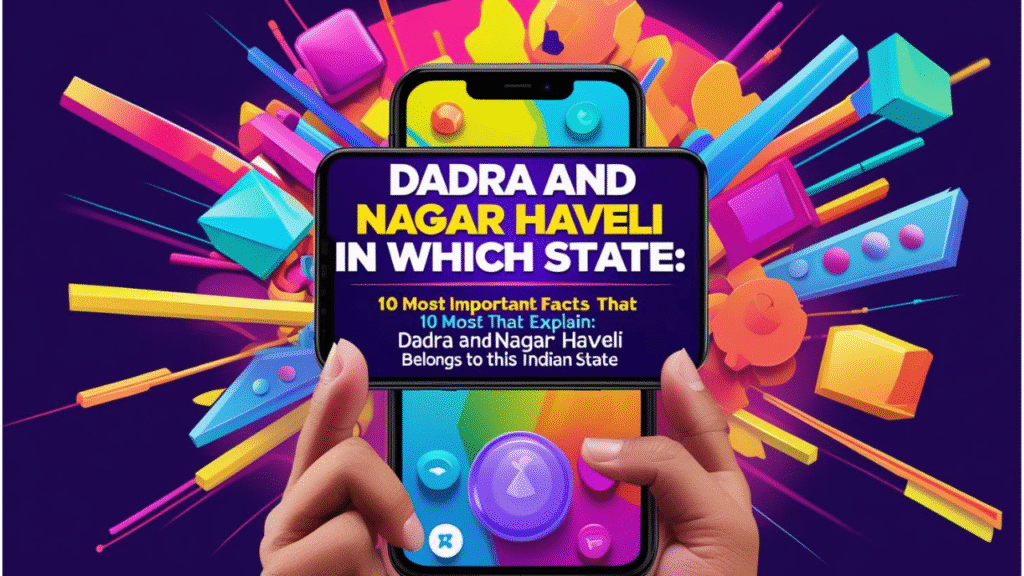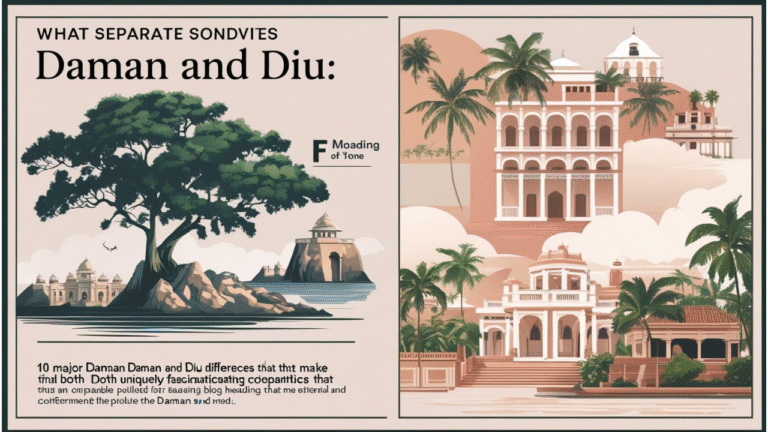dadra and nagar haveli in which state might appear to be some remote, lesser-heard-of territory, but its administrative history and development speak a lot about India’s federal framework. You might be a scholar, a tourist, or just an inquisitive citizen, but knowing in which state Dadra and Nagar Haveli lies is not just a matter of geography—it is a testament to India’s adaptive governance.

In this blog, we’ll explore political geography, administrative history, and merger choices that now shape Dadra and Nagar Haveli’s identity. We’ll take you through its evolution over the decades, its present union, and what that implies for governance and policy. Let’s begin.
What Is Dadra and Nagar Haveli?

Dadra and Nagar Haveli is an area in western India which lies between the states of Gujarat and Maharashtra. Its administrative and colonial history is somewhat unusual. It was a separate Union Territory of India once. Unlike states, which have an elected government, Union Territories (UTs) are federal territory controlled by Central Government.
“Dadra and Nagar Haveli in Which State?” asks why this question arises.
Many administrative reforms lead to the uncertainty over the statehood of Dadra and Nagar Haveli. It was not always a feature of a state. It was a Union Territory by itself, then changed administratively somewhat later. It is today merged with another Union Territory instead of a traditional Indian state.
Dadra and Nagar Haveli is part of the Union Territory of “Dadra and Nagar Haveli and Daman and Diu.”
You indeed heard correctly.
No Indian state, including Maharashtra or Gujarat, has Dadra and Nagar Haveli included within it. Rather it is in the combined Union Territory of Dadra and Nagar Haveli as well as Daman and Diu.
This merger came to pass on January 26, 2020—Indian Republic Day. Two neighbouring UTs—Dadra and Nagar Haveli and Daman and Diu—were merged into one administrative unit.
Examining the Merger More Closely
Now let’s examine the causes behind and the process of administrative consolidation:
The merger sought to eliminate service duplication between two minor territories dadra and nagar haveli in which state separately administered earlier but with significant logistical overlaps, hence improving administrative efficiency.
Legal Support:
The Indian Parliament enacted “The Dadra and Nagar Haveli and Daman and Diu (Merger of Union Territories) Act, 2019.” The President of India approved the Act and it was enacted on January 26, 2020.
Administrative Consolidation:
After the merger, the capital of the new Union Territory is Daman. Administration falls under one administrator who is directly appointed by the President of India.
Influence on Residents:
There was little disturbance for the citizens of these areas. Police, health, and education services were rationalized to enhance accessibility and budgetary economy.
Strategic Reason:
The two UTs shared the same administrator and the same type of government departments. Their merger eliminated duplication and enhanced governance with an integrated policy environment.
dadra and nagar haveli in which state Located Geographically?
Dadra is an enclave within Gujarat, close to the city of Vapi.
Greater in area than Dadra, Nagar Haveli is between Gujarat and Maharashtra.
Dadra and Nagar Haveli were managed jointly as a single UT from 1961 till the merger in 2020, but being geographically different.
Background: Colonial Past and Indian Integration
Portuguese rule over this area lasted more than 150 years.Dadra was freed in 1954 by Indian nationalists, and it operated separately until 1961 when it was officially integrated into India.
Its Portuguese heritage is also common with Daman and Diu, making the union a culturally sound and historically plausible administrative choice.
Administrative Setup Now
Dadra and Nagar Haveli capital and state
Headquarters: Daman
Administrator: Appointed by the President of India
Legislative Body: No elected legislature (like for most UTs)
Legal System: Indian Penal Code and Central laws applicable everywhere
Why This Merger Matters for India’s Governance Model
Streamlining Administration: Less bureaucratic duplications decrease cost and enhance service delivery.
Uniform Policy Framework: Legislation and schemes are now able to be applied alike in both territories.
Cultural Alignment: Having common colonial pasts and linguistic populations makes it easier to govern.
National Integration: Streamlining the UT structure helps India’s long-term administrative unity.
Procedures to Verify This Situation (For Students or Researchers)
Should you be a researcher or student seeking to validate the current administrative configuration, follow these guidelines:
Go to official government websites including the Ministry of Home Affairs (mha.gov.in) or india.gov.in.
Look for “Union Territories of India” or the individual Act: “The Dadra and Nagar Haveli and Daman and Diu, 2019.”
Get and review the Act’s gazette notification or abstract in step three.
Step 4: regard the united UT as one using the Census 2021 Provisional Reports, which today regard as one.
Step 5: Verify current maps produced by NCERT books or the Survey of India for updated administrative divisions.
Impact on Citizens’ Governance
For all government-related concerns, citizens now have to deal with one group of officials.
Redundant documentation: Aadhaar, voter ID, and PAN cards are now under the jurisdiction of the new UT.
Development efforts now target a wider area, rendering public infrastructure more uniformly available.
Myths Debunked
It is NOT located in the state of Maharashtra or Gujarat.
It is NOT a sovereign state.
It IS part of a Union Territory that was created by uniting two UTs: Dadra and Nagar Haveli, and Daman and Diu.

Frequently Asked Questions (FAQs) about dadra and nagar haveli in which state
Q1. Which Indian state contains Dadra and Nagar Haveli?
A1. Dadra and Nagar Haveli is not a state. It is one of the Union Territories of Dadra and Nagar Haveli and Daman and Diu.
Q2. When was the two-UT merger effectuated?
A2. It was made effective on January 26, 2020.
Q3. Where is the merged Union Territory’s capital?
A3. Daman is the administrative capital of Dadra and Nagar Haveli and Daman and Diu.
Q4. Why were Dadra and Nagar Haveli and Daman and Diu merged?
A4. Merger was conducted to increase administrative efficiency, simplify governance, and eliminate duplication of services.
Q5. Does Dadra and Nagar Haveli possess a legislative assembly?
A5. No, similar to most Union Territories, it does not possess its own legislative assembly.
Final Thoughts
It is important to grasp the status of Dadra and Nagar Haveli in order to understand India’s federal organisation, constitutional provisions, and administrative reforms. Small as it is, the union with Daman and Diu is part of a broader national plan: simplification, integration, and governance improvement.

If you’re going to study or visit this place, ensure that you mention the proper Union Territory—Dadra and Nagar Haveli and Daman and Diu and not a state. With this clarity, you’re now more aware of one of India’s lesser-known but strategically significant areas.
What’s the Deal with BDG Login? Let’s Break It Down






